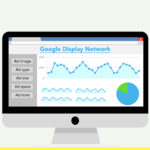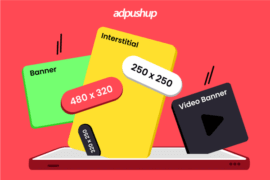Showing the same ad over and over again can irritate visitors. But then what is the exact number of times an ad should be shown to a visitor? Well, there is no exact number. However, historical data of previous campaign can help in deciding ad frequency. This is what we are going to discuss in this article about frequency capping.
What is Frequency Capping?
Frequency capping means to restrict an ad (or a campaign) from appearing on a visitor’s screen over and over again. The objective is to reduce banner burnout—a phenomenon where showing an ad repeatedly to a visitor, results in reduced clickthrough rates.
Here’s where frequency capping can help:
- For publishers, to avoid annoying visitors by showing them the same ad over and over again.
- For advertisers, to avoid spending money on impression not leading to conversions.
Frequency capping originated in ad tech in 1990, to tackle a problem where advertisers were paying for pointless impressions that were not converting. Frequency capping helped advertisers to get better conversions to impression ratio (or simply, conversion rate).
While creating an ad campaign, advertisers set the frequency capping for the particular campaign. However, many servers including DFP allows publishers to add frequency capping. It could be 3 impressions per user per day or 10 impressions per user per week and so on.
This feature uses cookies to identify unique user and to remember the impression count. Frequency capping is mentioned in the insertion order. Both publishers and advertisers can negotiate the frequency cap before signing the IO.
Why Use Frequency Capping?
Advertisers want to promote their product or service, but overexposing them to the same audience is never advisable. Also, if a visitor checks the website once or twice, it doesn’t mean he/she should then see the advertiser’s ads all the time. In fact, this practice can result in decreased campaign performance. And sometimes even result in visitors completely ignoring the ads, also known as banner blindness. Or worse, start thinking that the brand is intrusive.
Every ad campaign has a goal. It could be getting x number of leads or conversions. If a single user gives 10 impressions a day without converting, then it’s no good for advertisers. The advertiser is still paying for these ‘wasted’ impressions. Limiting the number of times a visitor sees a particular ad can save advertiser’s money and increase the campaign RoI.
What’s in it for Publishers?
Frequency capping can be a good idea for publishers running affiliate campaigns. This is because showing different ads (or different products) to the visitors might increase the chance of them clicking on an ad and actually making a transaction. Everyone likes more options.
The ad campaign responses are often measured by the number of times users clicked on ads. More impressions and fewer click-throughs translate to a bad click-through rate (CTR). When buying a publisher’s inventory, advertisers look at the CTR provided by the publisher. If it’s not satisfactory, inventory price goes down, in turn affecting the publisher’s revenue. However, this can be avoided by putting a frequency cap and maintaining a good CTR.
Also, frequency capping can improve a publisher’s relationship with the advertisers. This how it works—by capping the ad creatives receiving fewer clicks, publishers can drive traffic to higher-performing creatives. Due to this, the advertisers will get a higher conversion rate. All this could result in more satisfying campaign results for both the publisher and the advertiser.
How to Set a Frequency Cap In DFP
To Set a Frequency Cap in DFP-
- Sign in to Google Ad Manager, go to Delivery tab
- Click on order and then the line item that you wish to edit
- Go to Settings tab and navigate to Adjust delivery. Make the desired changes
- Finally, save the settings
According to industry best practices, 3 impressions per day is the optimal frequency to run ad campaigns. Also, testing is important here. Adding a frequency cap and not monitoring the performance of the ads are not going to do any good. Hence, it is advisable to carefully examine and make changes to drive better campaign performance.
FAQs
On average, more users will click on your ad if they see it 3 times per day for some unfathomable sociological reason. There will be different frequency caps for different ads on different networks, of course.
Brands can use frequency capping to keep their customers interested in their content. Ad viewability is improved by delivering the right ads to the right customers, and campaign budgets aren’t wasted on irrelevant ads.
Yes, you can add frequency caps on Facebook ads by setting the frequency cap in the customize column in the ad report.

Shubham is a digital marketer with rich experience working in the advertisement technology industry. He has vast experience in the programmatic industry, driving business strategy and scaling functions including but not limited to growth and marketing, Operations, process optimization, and Sales.







